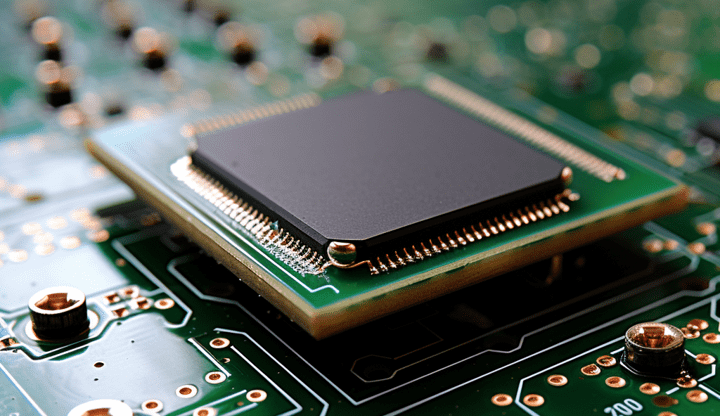
Fluxless TCB vs TCB
As interconnection pitches shrink below 10µm for advanced logic and memory applications, fluxless TCB solves the issues that standard TCB encounters with the flux.
Software deployment is the process of making a computer program or application available to use. It involves the installation, configuration, and setup of the software on a computer system or server.
This process ensures that the software is properly installed and ready to be used by end users. It may involve tasks like copying the necessary files to the appropriate locations, configuring settings, and creating shortcuts or icons for easy access. The goal of software deployment is to make sure that the software runs smoothly and efficiently on the target system.
During software deployment, testing and validation are often performed to ensure that the software operates correctly and meets the desired functionality. This typically involves checking for any errors or bugs and making sure the software is compatible with the operating system and other required dependencies.
In the section below you can see how Spotify utilizes software deployment to improve flexibility, user experience and avoid errors in coding. If you want to know first-hand from Spotify, check this article.

Spotify, the world’s leading music streaming platform, has always been at the forefront of innovation in the software industry. They have adopted a robust and efficient approach to software deployment, known as continuous deployment, to deliver new features and updates to their millions of users worldwide.
Challenges: Spotify faced several challenges:
Solution: Spotify implemented a continuous deployment approach to address these challenges.
How Continuous Deployment Works for Spotify:
Results: Spotify’s adoption of continuous deployment has yielded several benefits:
In conclusion, Spotify’s successful implementation of continuous deployment illustrates how this approach can address the challenges of rapid development, quality assurance, and global scalability in the software industry. It showcases the importance of automation, testing, and user feedback in achieving efficient and effective software deployment while maintaining a high standard of service for a massive user base.
In today’s software industry, software deployment plays a crucial role in delivering high quality, reliable, and secure applications to end users. It involves seamlessly transitioning the developed software from the development and testing environments to production environments, ensuring that it is ready for use by customers or end users.
Software deployment finds applications in numerous industries and sectors, including:
1. Web development: Web applications, websites, and portals require deployment to web servers, ensuring they are accessible to users across different browsers and devices.
2. Mobile Development: Mobile applications need to be deployed to app stores and various mobile platforms, such as iOS and Android, to make them available for download and use by smartphone and tablet users.
3. Enterprise Software: Large organizations rely on software deployment to install and manage complex enterprise systems, including customer relationship management (CRM), enterprise resource planning (ERP), and supply chain management (SCM) applications.
4. Cloud computing: With the emergence of cloud platforms, deploying software has become instrumental in deploying applications to cloud infrastructure, such as Platform as a Service (PaaS) and Infrastructure as a Service (IaaS) providers.
5. Internet of Things (IoT): deploying firmware, software updates, and patches to Iot devices enables them to function with the latest features and ensuring security and performance.
6. Gaming Industry: Deploying game software to gaming consoles, PCs, or mobile devices allows players to access and enjoy their favorite games.
7. Fintech Industry: Financial technology companies rely on software to deliver online banking, trading, and payment processing solutions securely and efficiently.
8. Healthcare Industry: Software is essential for deploying electronic health record systems, telemedicine platforms, and healthcare analytics applications, improving patient care and streamlining healthcare processes.
9. E commerce: Deploying software for e commerce platforms ensures the smooth operation of online stores, including inventory management, payment processing, and order fulfillment.
10. Educational Institutions: Educational institutions use software deployment to deliver learning management systems, online course platforms, and virtual classroom environments to students and teachers.
In the early days of software development in the 1970s, deployment was a manual process. Programs were often distributed on physical media such as punch cards or magnetic tapes, and installation involved copying files onto the target systems.
In the 1980s, with the rise of personal computers, software deployment became more standardized. Installation packages and scripts were introduced to automate the installation process, making it easier to distribute and install software on different platforms.
The adoption of networked environments and client server architectures brought new challenges to the software industry. Systems administrators started using tools like FTP and network file sharing to distribute software updates to multiple machines.
In the beginning of the 20th century the emergence of web applications and the shift towards internet based software introduced new concepts like “Software as a Service” (SaaS). Web based software could be accessed and used directly through web browsers, eliminating the need for client side installation and deployment. The rise of virtualization technology and cloud computing also revolutionized software deployment. Virtual machines and containerization made it easier to package and deploy applications, improving scalability and flexibility. Continuous Integration and Continuous deployment (CI/CD) practices gained popularity, enabling developers to deliver software updates rapidly and frequently. Automated deployment pipelines using tools like Jenkins and Kubernetes became common in software development workflows.
Nowadays software deployment has become more streamlined and automated than ever before. The focus is on DevOps practices and infrastructure as code, where deployment configurations are managed and versioned alongside the software code itself.

As interconnection pitches shrink below 10µm for advanced logic and memory applications, fluxless TCB solves the issues that standard TCB encounters with the flux.
The metal pitch refers to the distance between the centers of two adjacent metal interconnect lines on an integrated circuit (IC). Since transistors evolved into 3D strucrures, this measurement has lost significance.

The front-end and back-end are highly interdependent. A constant feedback loop between front and back-end engineers is necessary to improve manufacturing yields.

Built directly into the silicon, through silicon vias (TSV) facilitate 3D IC integration and allow for more compact packaging. They have become the default solution to interconnect different chip layers or to stack chips vertically.

Silicon carbide (SiC) is used in electric vehicles due to its wide bandgap and great thermal conductivity. Gallium nitride (GaN) shares many characteristics with SiC while also minimizing RF noise.

GPU vs CPU is a parallelization vs complexity dilemma. While GPUs can manage very large parallel calculations, they struggle with linear, more heterogeneous tasks, where CPUs excel.
The information provided on this site is for informational purposes only. The content is based on the authors´ knowledge and research at the time of writing. It is not intended as professional advice or a substitute for professional consultation. Readers are encouraged to conduct their own research and consult with appropriate experts before making any decisions based on the information provided. The blog may also include opinions that do not necessarily reflect the views of the blog owners or affiliated individuals. The blog owners and authors are not responsible for any errors or omissions in the content or for any actions taken in reliance on the information provided. Additionally, as technology is rapidly evolving, the information presented may become outdated, and the blog owners and authors make no commitment to update the content accordingly.